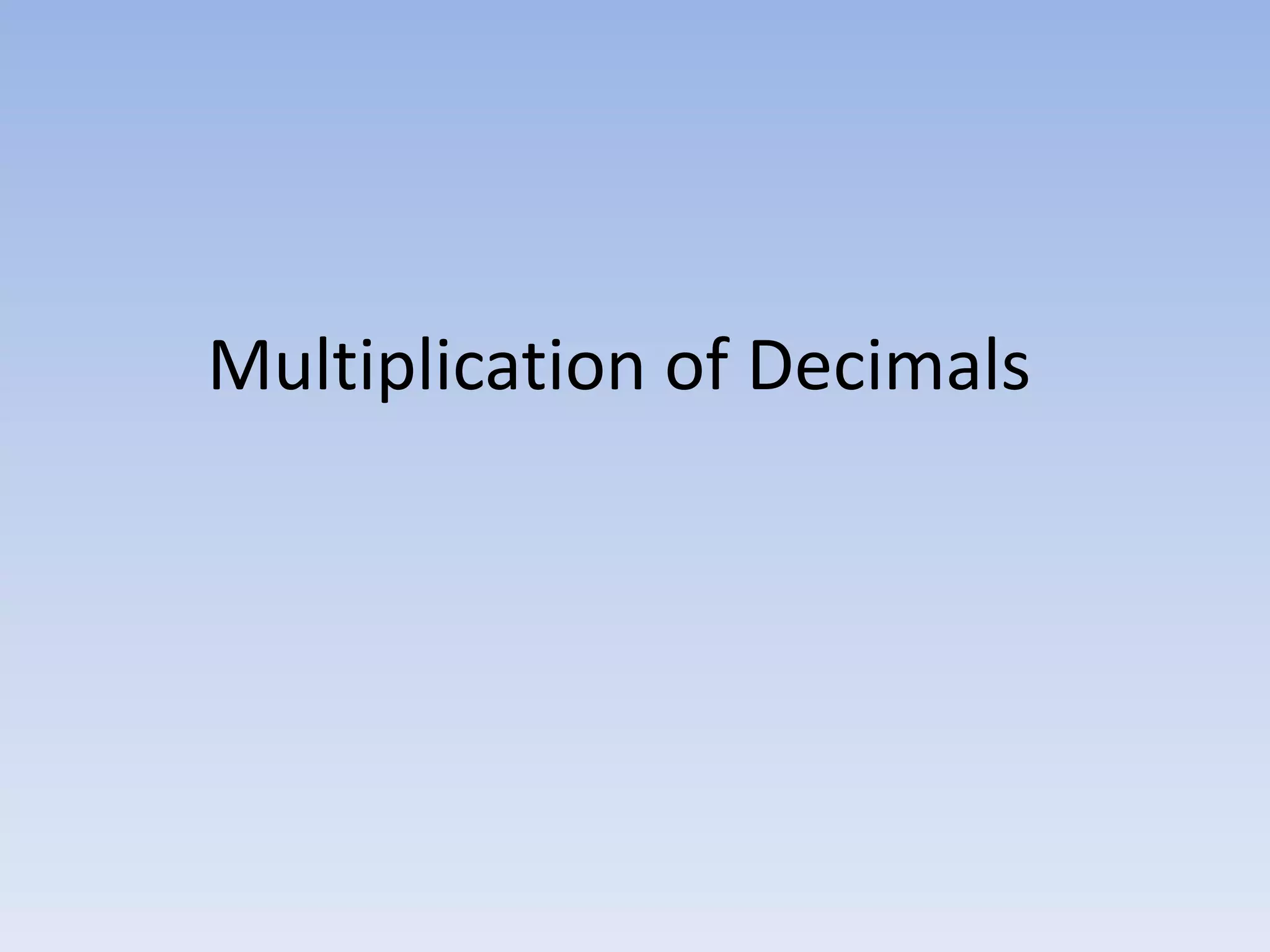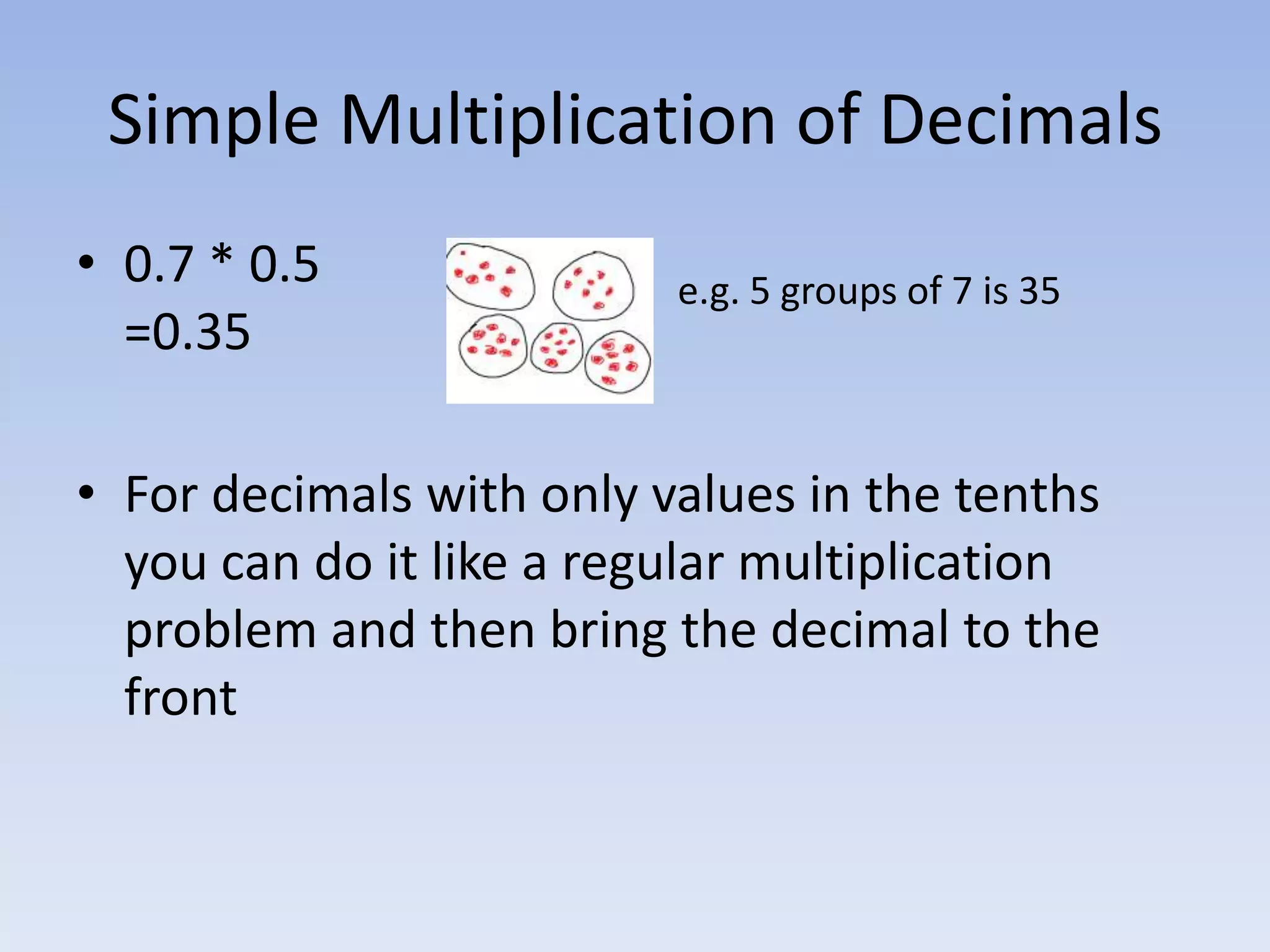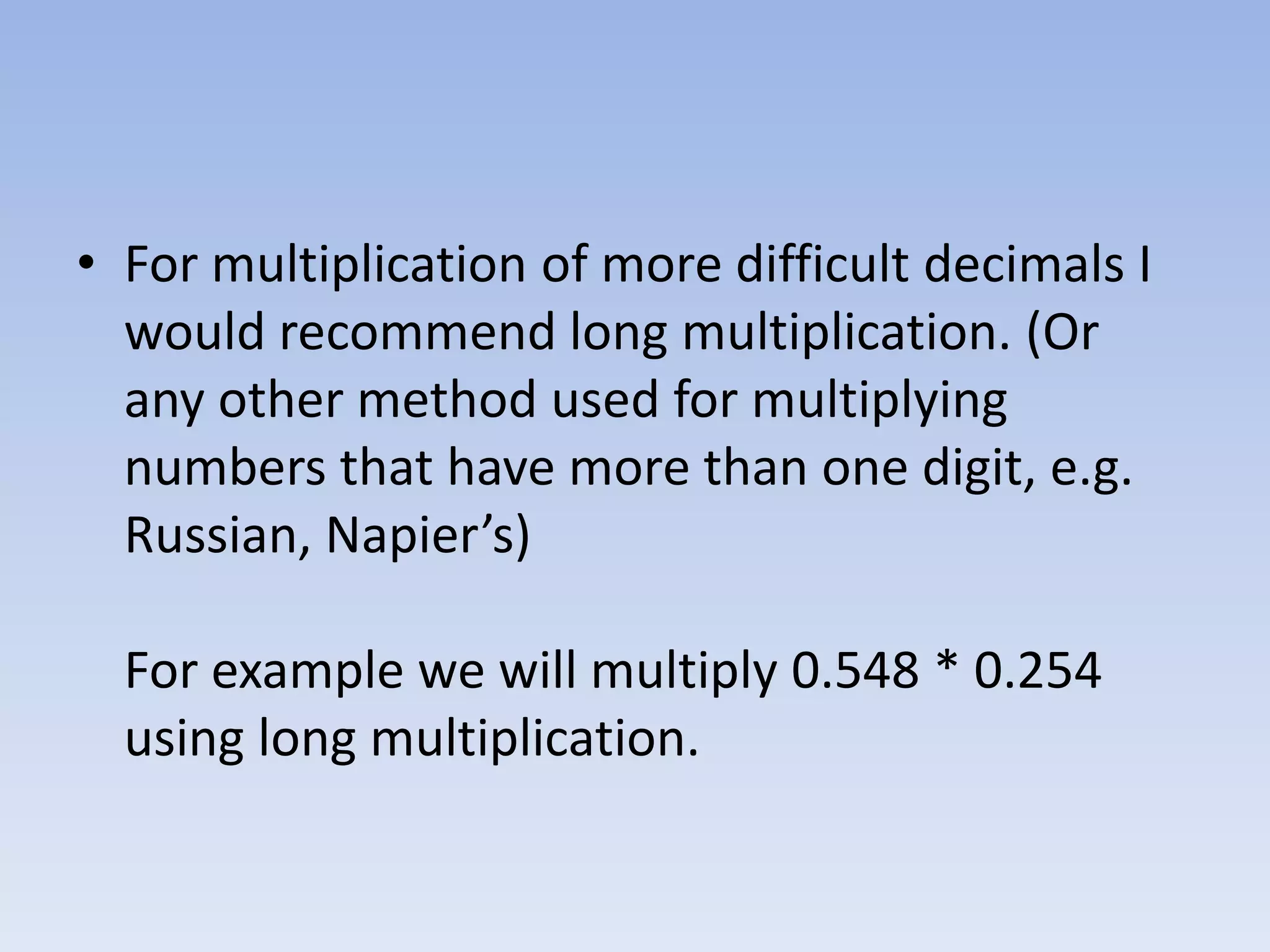To multiply decimals, you can:
1. Multiply the numbers as usual and place the decimal point in the product by counting decimal places. For example, 0.7 * 0.5 = 0.35.
2. Use visual representations like grids to count the number of squares representing the product.
3. Convert decimals to fractions and multiply the fractions. For example, 0.7 = 7/10, 0.5 = 5/10, so 0.7 * 0.5 = 7/10 * 5/10 = 35/100 = 0.35.
4. Use long multiplication for more complex decimals like 0.548 * 0.254 = 0.139192.












